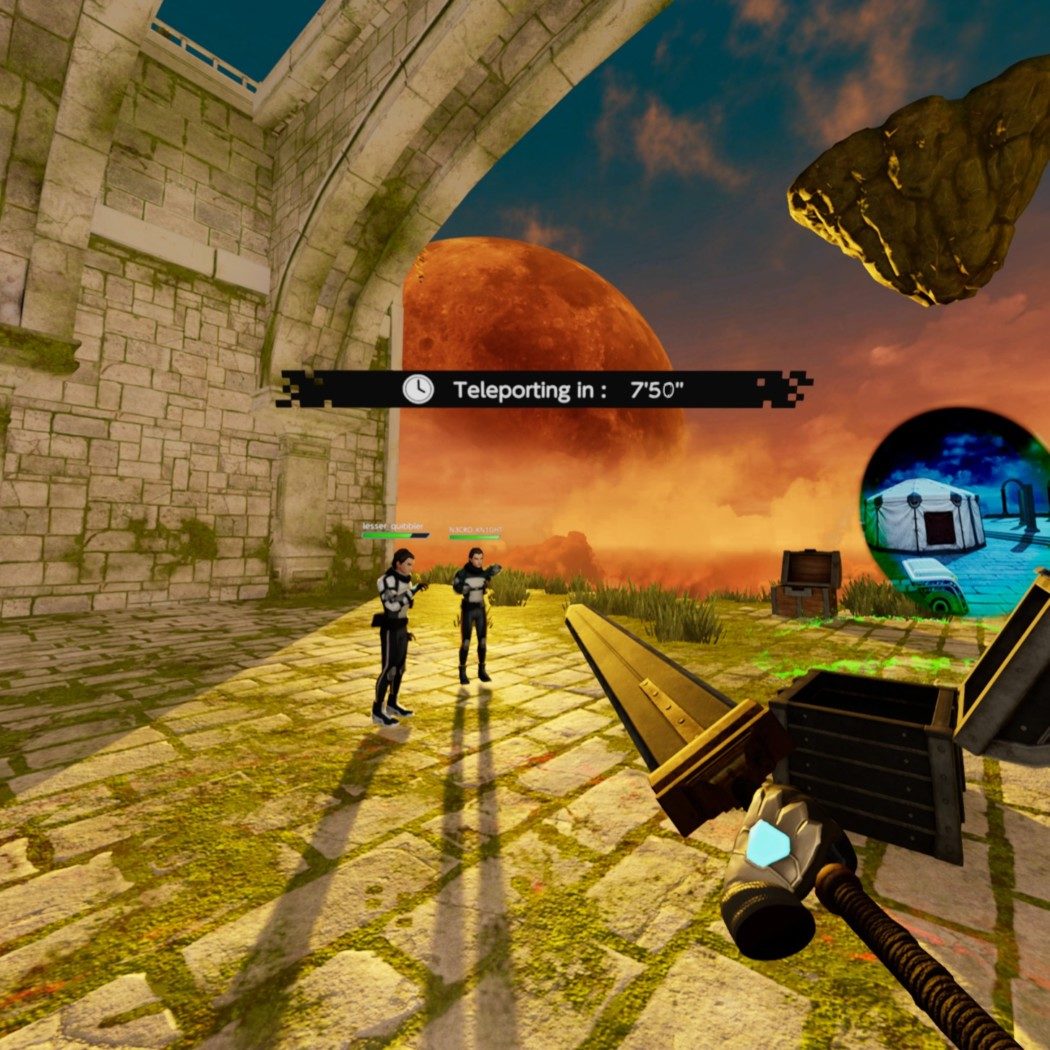

This current review focuses on adverse symptoms from HMD use, hence the term “VR Sickness” will be referred to as the symptoms (and their severity) typically reported in the literature from HMD use.

Thus, diverse terminology is often used interchangeably across the virtual environments literature. The term VR sickness has typically been used in studies using HMDs ( Cobb et al., 1999 Kim et al., 2018). Cybersickness, originally used to describe side effects from use of virtual environments ( McCauley and Sharkey, 1992), has often been mentioned in studies using a variety of technologies including flat screen displays and head-mounted displays (HMD) ( Rebenitsch and Owen, 2016).
#ALTAIR BREAKER VR SIMULATOR#
The term simulator sickness originated from the early use of flight simulators in the military ( Kennedy et al., 1993), and is still currently used in research using modern HMD technology ( Tyrrell et al., 2018 Ziegler et al., 2018). Side effects from virtual environment usage has been referred to by many terms including simulator sickness ( Kennedy et al., 1993), cybersickness ( LaViola, 2000) and VR sickness ( Kim et al., 2018). Identifying factors that increase the occurrence of simulator sickness becomes necessary with the increased use of VR for rehabilitation, industry training and gaming/entertainment consumers ( Gallagher and Ferrè, 2018 Powell et al., 2018 Wang et al., 2018).

Characterizing and quantifying these symptoms is challenging, as several factors are at play including a diverse range of technologies the use of inconsistent terminology for sickness from using virtual environments little consensus on the biological mechanisms of symptoms the diverse range of VR content along with user characteristics such as age and sex ( Hale and Stanney, 2014). These findings are of relevance for informing future research and the application of VR in different contexts.ĭespite advancements in virtual reality (VR) technology, many people still report experiencing simulator sickness symptoms from its use ( Rebenitsch and Owen, 2016 Gavgani et al., 2017 Duzmanska et al., 2018 Guna et al., 2019). Across all types of content, the pooled total SSQ mean was relatively high 28.00 (95%CI 24.66–31.35) compared with recommended SSQ cut-off scores. Older samples (mean age ≥35 years) scored significantly lower total SSQ means than younger samples, however, these findings are based on a small evidence base as a limited number of studies included older users. VR sickness profiles were also influenced by visual stimulation, locomotion and exposure times. Findings show gaming content recorded the highest total SSQ mean 34.26 (95%CI 29.57–38.95). Fifty-five articles met inclusion criteria, representing 3,016 participants (mean age range 19.5–80 41% female). A systematic search was conducted according to PRISMA guidelines. User factors associated with VR sickness were also examined. The primary objective of this systematic review and meta-analysis was to examine the literature on HMDs that report Simulator Sickness Questionnaire (SSQ) scores to determine the impact of content. VR sickness may be influenced by technological differences within HMDs such as resolution and refresh rate, however, VR content also plays a significant role. Despite advancements in VR technologies, many users still experience sickness symptoms. The use of head-mounted displays (HMD) for virtual reality (VR) application-based purposes including therapy, rehabilitation, and training is increasing. 3Institute for Creative Technologies, University of Southern California, Los Angeles, CA, United States.2Division of Health Services Research, Department of Medicine, Cedars-Sinai Health System, Los Angeles, CA, United States.1Cognitive Ageing and Impairment Neurosciences Laboratory, School of Psychology, Social Work and Social Policy, University of South Australia, Adelaide, SA, Australia.Keage 1 Albert Rizzo 3 Tobias Loetscher 1 Dimitrios Saredakis 1 * † Ancret Szpak 1 † Brandon Birckhead 2 Hannah A.


 0 kommentar(er)
0 kommentar(er)
